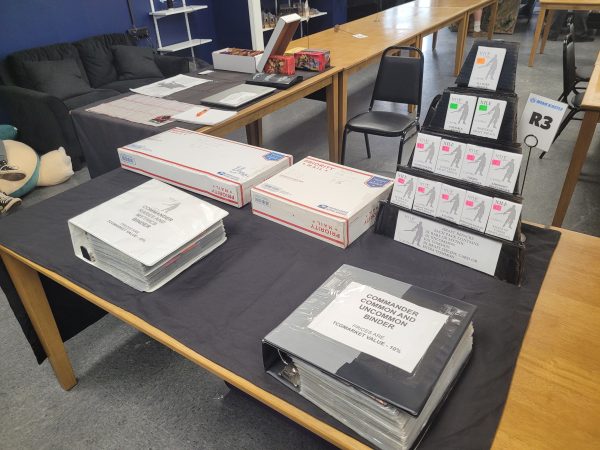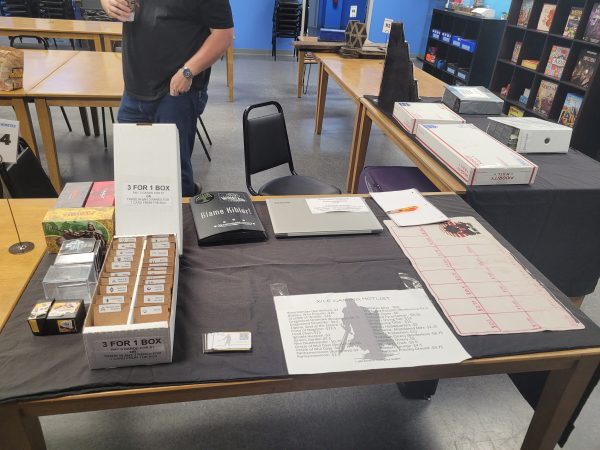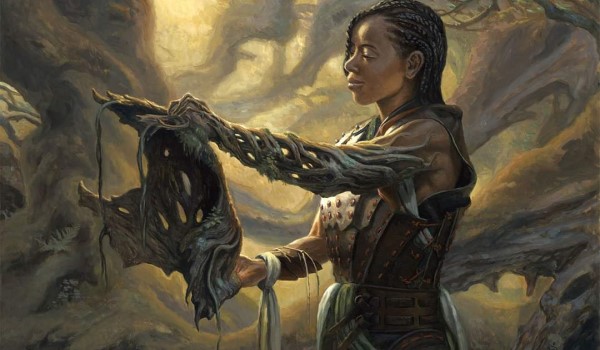Are you a Quiet Speculation member?
If not, now is a perfect time to join up! Our powerful tools, breaking-news analysis, and exclusive Discord channel will make sure you stay up to date and ahead of the curve.
Welcome to the follow-up piece to my last article, Vending Preparation: The Second Go-Round. In that piece, we went over the many things I had learned vending at a previous event, and how I planned to implement them at my next one. Well, that next event has now come and gone, and I'm back to share how it went... and, of course, some new lessons learned!
But First, a Pre-Order
As previously discussed, locking in pre-order sales can help manage the costs associated with vending. This time, I had 2 pre-orders prior to the event. One was for $80, while the other was close to $100. Given that each table cost me $20, as long as either person showed up, I could essentially break even.
The day started off on the right foot, as my $80 pre-orderer was there bright and early when the event started at 10:00.
Newer vs. Older Players
My first customer was a nice gentlemen who had only started playing at Commander Legends: Baldur's Gate. This meant that much of what he needed were older cards for his Tor Wauki, the Younger Commander deck. He wanted me to look through his cards to see if there was anything I wanted to pick up to help reduce his tab. Unfortunately, everything was from either Double Masters or Dominaria United, and none of it was stuff I thought I could resell.
This would be a repeating problem throughout the day, but provide a valuable lesson. The store hosting the event has been open a little over a year, and Magic is a small part of what they offer. Its Magic playerbase is predominantly players who only started playing in the last 2-3 years. This means that many of them have relatively small collections of newer cards.
Anyone who buys and sells cards regularly may know where this is going: such players tend to over value their own cards and don't understand why I can't trade them dollar-for-dollar on what they want. I do understand this mindset, as I shared it when I was a newer player. I remember how bad I felt the first time I buylisted cards to a store thinking I had ripped myself off. (Fun fact: that buylist order was to Card Kingdom for a bunch of HP dual lands when they were $35-$85 each.)

As with most things, I quickly realized that this event was unlikely to be a good buying event. But it could be a good selling event. So I pivoted my attention towards talking with customers and highlighting cards that worked well with cards I saw them picking out, rather than digging through their boxes of Standard-legal cards to pick out cheap cards to buy.
This pivot allowed me to focus more on my customers and get to know their playstyles a bit better. I also forget how much joy people can find when they see a card they didn't know existed that fits perfectly in some deck they own.
I think one of the unfortunate sacrifices that us more competitive players make is the ability to consider the fun, exciting interactions a card may create, even if those opportunities are few and far between. I know that when I see a card that could do something amazing in a rare circumstance, I brush it off and look for cards that are more universally useful in nature.
Universal Selling Price
The last time I vended at this venue, I spent several evenings pre-pricing cards. This made transactions very easy, but given the small number of sales I got, the effort required was not worth the time savings. I calculated that I had essentially paid myself about $5 an hour doing that. For this event, I posted that I would charge the TCGPlayer market value -10%. Most of my customers seemed to appreciate this.
I used my MTG Familiar app and added in the cards they picked out to keep a running list of their order and provide up-to-date prices on cards. The obvious downside is that I was limited to two people at a time, as the trade setting on the app only has 2 columns. At one point I did have four customers, however; one was focused solely on the 3-for-$1 box, and the other was only interested in a couple of Temple Gardens.
Moving forward, I will maintain this pricing strategy given how easy it was to use and its universal acceptance.

Expanding Payment Options
I mentioned regarding my first vending experience that I had missed out on a couple sales due to my only accepting cash and PayPal. So the day before the event, I installed Cashapp, Venmo, and got Zelle setup as well. I would be lying if I didn't say I was hesitant to expand payment options, only because I don't like the idea of having money spread around all over. However, all these options have easy ways to "cash out," and by having money in them, I can also buy cards from people easier by using their preferred payment method. I actually had customers pay me in both Cashapp and Venmo, so I am glad I had those options setup.
Displays
I mentioned a display stand in my last article, and was able to complete it in time for the event. I will be the first to admit that my craft skills leave much to be desired. Still, thanks to black spray paint, I was able to make something that served its purpose and looked decent enough. I displayed my repacks on it, thus converting horizontal space into vertical space and providing a way for customers to get a better understanding of what I was offering. I actually ended up selling 14 repacks!
I made sure to print out signs for my binders and the 3-for-1 box. This provided my customers with pricing information before they put any effort into digging for cards. As I mentioned earlier, while my singles pricing wasn't pre-priced, if they looked up a card online, they would know the price. This seems obvious, but I have dealt with plenty of stores whose pricing is unknown until check out, which I as a customer hate. I want to know what something costs when I am considering it, not when I am at the payment step of the shopping experience.
People Problems
We did have Hurricane Ian hit our state this weekend; where I live we had mostly rain and some high winds, but very little damage to anything. Perhaps in part because of the hurricane, this event had a lot fewer people show up and a lot of empty vendor tables.
I personally feel the venue needs to shift its hours, which are 10am to 2pm, as most of the morning no customers were around. Most of my sales occurred after 12:30. The lack of customers and short window are definitely an issue, but I made sure to give every customer a business card and encouraged them to reach out to me for any Magic needs, which is something I failed to do at my first event. This is arguably one of the most important things to do when you are a very small business. I've already had one of my customers join my Facebook store group.
I will likely participate in the next event simply because the table cost is so low, but would like to see more of an effort from the venue to attract customers if I am going to continue vending there. I felt like I did more marketing and getting people to come than they did, and as their customer, I am not a fan of that.
The Cherry on Top
I did get lucky in that the people at the table next to me had a small Magic collection they wanted to sell and I noticed that it included the Magic Game Night Box, though it was opened. I offered them $30 without knowing what all was included and happily found the all the Game Night cards, as well as a few other hidden gems like a Stomping Ground and a Jace, Wielder of Mysteries. That final lesson is a classic: collection buying often offers the best bang-for-buck of any Magic purchase!





